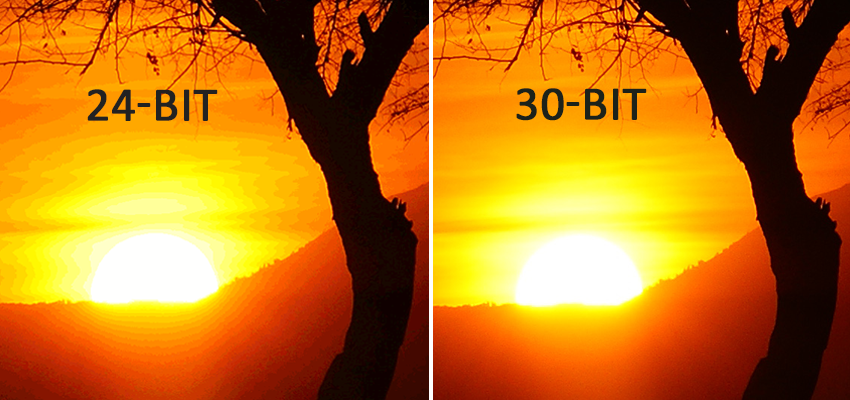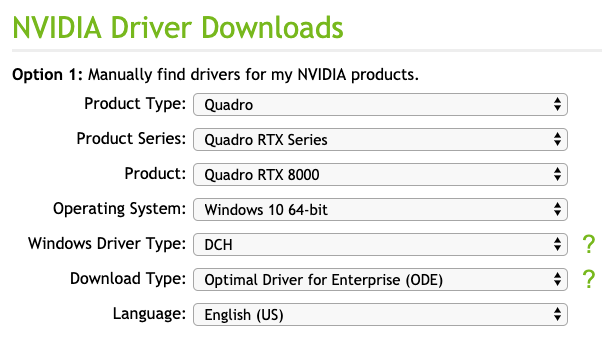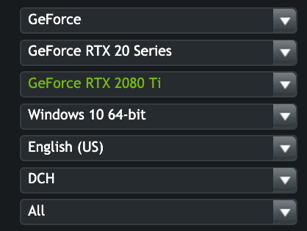In this blog post, let’s address the difference between the following driver variations and help you choose the right driver for your graphics card investment.
- GeForce Game-Ready driver vs. Studio driver
- Quadro ODE driver vs. QNF driver
- Standard Package vs DCH Package
GeForce Game-Ready Driver vs. Studio Driver
There are currently two driver variants available for NVIDIA GeForce graphics cards. The first is the familiar “Game-Ready” driver that is optimized for popular PC games.
NVIDIA works very closely with game developers throughout the development process, and from its partnership with the developers, NVIDIA engineers tune the driver with game specific optimizations that provide the best visual experience and performance. The Game-Ready drivers have the most frequent update schedule and optimizations for both new and existing games.
In the latest Game-Ready driver 431.60 released on July 23, NVIDIA provided optimization for Wolfenstein: Youngblood (released on July 25), Wolfenstein: Cyberpilot (released on July 26), and Madden NFL 20 (released on August 2).
The “Studio Driver” is the newest GeForce driver variant, which focuses on optimization for popular creative applications such as Adobe Photoshop, Adobe Premiere Pro, Blender 2.80, Cinema 4D R21, Otoy Octane Render 2019.2, and Autodesk Arnold.

The latest Studio driver further extends support of 30-bit color to the GeForce product line, increasing the pixel color range from 16.7 million to over 1 billion colors, reducing the possibility of color banding during the creative process. This example provided by NVIDIA, shows the level of detail 30-bit color can achieve compared to 24-bit color.

(source: https://www.nvidia.com/en-us/geforce/news/studio-driver/)
You can now choose the driver that best fits your workloads; if you spend more time playing the newest AAA games, you should pick the latest “Game-Ready” driver.
However, if you are a digital content creator and utilize the key creative applications or suites supported by the “Studio” driver, then that is the way to go.
If you are interested in learning more about GeForce Studio driver, please visit NVIDIA’s Studio Driver announcement page: https://www.nvidia.com/en-us/geforce/news/studio-driver/
Quadro ODE driver vs. QNF driver
For Quadro professional graphics cards, there are two driver variants, which are “ODE” and “QNF.”
ODE or “Quadro Optimal Driver for Enterprise” is typically the driver we recommend for customers using Quadro graphics cards. ODE drivers are optimized for overall stability and performance in professional mission-critical environments. They also offer ISV certification and long lifecycle support that enterprise IT and creative professionals rely on.
QNF, or “Quadro New Feature” drivers are derived from the ODE driver, with added support and optimizations for new application features and workstation environment functionality. The QNF drivers are more product specific, and are recommended for users who specifically need access to the new features built into a specific QNF driver.
Overall, PNY recommends deployment of the Quadro ODE driver in most Quadro use cases.
Standard driver package vs. DCH driver package
For each of these driver variants, you will notice there is an option for Windows Driver Type and the choices are “Standard” as well as “DCH.”


The Standard driver package is what most people are familiar with, and will be the package type generally downloaded for their graphics cards.
DCH, or “Declarative, Componentized, Hardware Support Apps” is a new driver foundation that large System OEMs leverage to support Microsoft Universal Driver adoption. DCH drivers will only install onto systems already equipped with DCH drivers from the OEMs. Large OEMs take advantages of the Universal Driver format so they can unify drivers from different hardware vendors for the wide selection of system platforms and different configurations offered into a single convenient driver software package. This greatly improves the ease of use for customers, but for the vast majority of PNY customers, this is not the driver type to use.
These two driver types are not interchangeable. If you are currently using the Standard driver package, then continue using it. If your system shipped with DCH, then you should continue to download DCH driver packages from NVIDIA.
Additional Resources
If you are looking to learn more or purchase a new NVIDIA graphics cards by PNY, please visit our website:
https://www.pny.com/mega-commercial/explore-our-products
If you are looking to become a PNY Partner, please visit the following link:
https://www.pny.com/commercial/partner-program
If you are interested in learning more about NVIDIA’s DCH Drivers or Universal Drivers, please visit the following links:
NVIDIA DCH/Standard Display Drivers for Windows 10 FAQ
https://nvidia.custhelp.com/app/answers/detail/a_id/4777/~/nvidia-dch%2Fstandard-display-drivers-for-windows-10-faq
Getting Started with Universal Windows drivers
https://docs.microsoft.com/en-us/windows-hardware/drivers/develop/getting-started-with-universal-drivers
To download the latest GeForce and Quadro drivers, please visit one of the following pages:
GeForce Driver: https://www.geforce.com/drivers
Quadro Driver: https://www.nvidia.com/Download/index.aspx
Do you have a great tip to share with the community regarding PNY GPU or Storage products?
We would love to hear from you. Please submit your tip suggestion by visiting the following page:


